Tailor Health Messaging to Address Racial and Ethnic Disparities in Adult Immunization
Fast Track Generic Clearance for the Collection of Routine Customer Feedback - HHS Communication
0990-0459 HHS Health Messages Focus Group Protocol.3_11_20
Tailor Health Messaging to Address Racial and Ethnic Disparities in Adult Immunization
OMB: 0990-0459
Form Approved
OMB No. 0990-0459
Exp. Date 09/30/2020
HHS Health Messages
Focus Group Protocol & Discussion Guide
Round 1
I. Purpose of the Study:
To establish effective tailored messaging strategies to increase community demand for pneumococcal and herpes zoster vaccinations. This messaging will be informed by collecting and analyzing feedback from non-Hispanic African American community health workers (CHWs) over 50 years of age.
II. Research Objectives:
Explore and define Health Belief Model (HBM) constructs of adult African Americans residing in Kansas City, Missouri and Omaha, Nebraska (target audience), as they relate to herpes zoster (i.e. shingles) and pneumococcal vaccinations. These key constructs include:
Perceived severity and susceptibility of pneumonia and shingles
Perceived benefits and barriers of receiving vaccinations/immunizations
Effective cues of action that drive the target audience towards adoption of vaccinations
Identify the most effective messaging strategies, techniques, and channels to increase demand for immunizations among the target audience.
Establish cultural understanding and community insight to ensure communications with adult African Americans is clear, relevant, and personal.
III. Focus Group Overview
Participants: Community health workers (CHWs) over 50 years of age
Total sample size: 20-28
Focus group size: Minimum of six
Session count: 4 focus groups
Locations: Kansas City, MO and Omaha, NE
Duration: Over 60 minutes
IV. Recruitment:
The Department of Health and Human Services (HHS) will be responsible for recruiting participants for the focus groups. Sensis will support communications and logistics with participants after HHS has initiated and confirmed interest with potential participants. Sensis will individually email each participant to answer questions/concerns, and remind the participants 2 days before, 1 day before, and the day of the focus group to ensure the focus group participation quotas are met. Sensis recommends identifying key community health worker champions who can serve as leaders in recruitment and ensure attendance from the CHW cohort.
According to the Paperwork Reduction Act of 1995, no persons are required to respond to a collection of information unless it displays a valid OMB control number. The valid OMB control number for this information collection is 0990-0459. The time required to complete this information collection is estimated to average 1.5 hours per response, including the time to review instructions, search existing data resources, gather the data needed, to review and complete the information collection. If you have comments concerning the accuracy of the time estimate(s) or suggestions for improving this form, please write to: U.S. Department of Health & Human Services, OS/OCIO/PRA, 200 Independence Ave., S.W., Suite 336-E, Washington D.C. 20201, Attention: PRA Reports Clearance Officer
V. Location/Facility:
HHS will determine applicable facilities and Sensis will deliver support services and recommendations on dates and timing of focus groups. Specifically, Sensis will engage the participants via email to understand the best dates and times to run the focus groups. Based on these communications, Sensis can recommend an optimal time for the focus groups to take place.
VI. Logistics Support
Focus Group Planning Checklist:
Sensis will own completion of the focus group planning checklist and will reach out to HHS to address checklist items related to facility reservations and HHS stakeholder attendance.
|
|
|
|
|
|
|
|
|
|
|
|
VII. Focus Group Flow
Session Overview: Total discussion guide (90 min)
SECTION 1: Introduction and Background (10 min) [Moderator introduces self, reviews ground rules with participants, and asks for participants’ background]
|
SECTION 2: Explore Perceived Immunization Barriers (10 min) [Moderator asks questions to assess immunization hesitancy and other perceptions among participants]
|
SECTION 3: Explore Perceived Immunization Benefits (10 min) [Moderator asks questions to assess perceived benefits of vaccines and immunizations and other relevant sentiment among participants]
|
SECTION 4: Explore Disease Severity/Susceptibility Perceptions (20 min) [Moderator asks questions to assess perceived severity and population susceptibility of shingles and pneumococcal-related diseases, like pneumonia]
|
SECTION 5: Message Testing and Exploring Action Triggers (30 min) [Moderator presents stimuli messages and assesses message clarity, effectiveness, and ability to drive action among the target audience]
|
SECTION 6: Closing Remarks (10 min) [Thank the participants for joining the conversation and asks for any final comments or ideas]
|
VIII. Focus Group Discussion Guide:
NOTES TO REVIEWER: |
|
|
Introductions. [Moderator introduces self, reviews ground rules with participants, and asks for participants’ brief personal background] (10 min)
Thank you for meeting with me today. My name is __________ and my agency has been contracted by HHS to conduct this focus group.
Before we begin, I want to share a couple of ground rules:
Your participation is voluntary, and you have the right to stop at any time. If I ask any questions you do not wish to answer, you do not have to respond.
There are no wrong answers here; we just want to know what you think.
If it’s okay with you, I’d like to audio-record our conversation. The recordings will only be used to confirm our notes and allow us to revisit this conversation. Additional project staff may hear the tapes at a later date. However, your name and personal information will be removed from any quotes and will not be used in any of our reports.
This research is entirely focused on the +50 years old African American community, so I’d like to ask you to think specifically about that community when providing your answers.
May I start recording now?
We will have about 90 minutes for our discussion.
Please turn your cell phone off or switch to silent mode.
Do you have any questions before we begin?
To kick things off, can you give me some background about yourself and your role as a community health worker?
What type of work are you involved in?
How do you engage with the +50 community?
Great, thank you for sharing. Now we will begin to talk about vaccinations and immunizations.
Immunization Barriers. [Moderator asks questions to assess immunization hesitancy and other perceptions among participants] (10 min)
Can you recall a story or example of a +50 community member expressing hesitancy/concerns about receiving an immunization? Why did they express this hesitancy/concern?
[Question probes, if focus group participants are reluctant to answer]:
Distrust of healthcare system?
Cost?
Access to a clinic or the healthcare system?
Unsure how it would improve their life?
May make them sick
Have others in the room heard similar issues on immunization hesitancy?
Yes? No?
[Establish any patterns or trends in group, and summarize findings before moving on]
Tell me about how your community views healthcare providers in general (nurses, pediatricians, doctors).
Who does the community trust the most?
And the least?
Why? (briefly)
Do you know anyone who will not take a vaccine because of religious or cultural or other reasons?
If so, what are the reasons?
Immunization Benefits. [Moderator asks questions to assess perceived benefits of vaccines and immunizations and other relevant sentiment among participants] (10 min)
What do you see as the best ways to educate your +50 community on the benefits of immunizations and vaccines?
Why these methods?
Can you share a story about a recent interaction with your community that used one of these methods? (Successfully or unsuccessfully.)
Does your +50 community openly, comfortably talk about vaccines? Why or why not?
When it comes to immunizations and vaccines, what do you think your +50 community, in general, agrees upon or is in consensus about?
Does your community, in general, understand their benefits? Or not so much?
Disease Severity/Susceptibility Perceptions. [Moderator asks questions to assess perceived severity and population susceptibility of shingles and pneumococcal-related diseases like pneumonia] (20 min)
I’d like to turn the conversation towards specific diseases and get a better understanding of the +50 community perceptions of these diseases.
In particular, I am interested in shingles and pneumonia.
Would you say that your +50 community is, in general, aware or unaware that they are at increased risk of shingles due to their age?
Of the conversations you have had with your community related to shingles, do they view this as a disease that should be taken seriously? Or do they view it as something insignificant, like a common cold?
Relatedly,
Would you say that your +50 community is, in general, aware or unaware that they are at increased risk of pneumonia due to their age?
Of the conversations you have had with your community related to the pneumonia, do they view this as a disease that should be taken seriously? Or do they view it as something insignificant, like a common cold?
Are there any differences in perceptions between these two diseases (shingles and pneumonia)?
If so, can you explain further?
Message Testing/Action Triggers. [Moderator presents stimuli messages and assesses message clarity, effectiveness, and ability to drive action among the target audience; emphasizes that the purpose of the messages is to increase the chance that someone who views the message would ask their healthcare provider about vaccines.] (30 min)
[Moderator provides explicit direction to participants on which messages to view, messages will be labeled and referred to with a random letter (e.g. Message C, J, T, P, S, W)]
[Ensure all participants are viewing the same message using verbal direction, Begin with shingles messages. Move into pneumonia-related messages, only after reviewing all shingles messages.]
Moderator presents one message stimuli at a time, pauses for the participants to view the message, and asks three questions about each message.
Would your community find this message clear and understandable? Why or why not?
Would this message increase the likelihood that community members would seek a vaccine or ask their doctor about the vaccine? Why or why not?
How might we improve this message’s effectiveness to drive action among your community?
The moderator then presents all three messages per disease together and asks the participants to compare and contrast the effectiveness of the messages.
Ask the participants to select a message they would want to see further developed because they think it will be the most effective at engaging the +50 community.
Conclusion and closing remarks. [Thank the participants for joining the conversation and ask for any final comments or ideas] (10 min)
Before we send you home, just a few last questions:
What did you learn today that you didn’t already know?
If we have another group conversation like this one, do you know someone who would be interested in participating?
In the coming months, would you personally be interested in continuing involvement in this project?
THANK YOU SO MUCH FOR YOUR TIME, AND FOR SHARING YOUR EXPERTISE WITH US. WE’RE GRATEFUL YOU WERE ABLE TO JOIN US TODAY.
IX. Focus Group Stimuli:
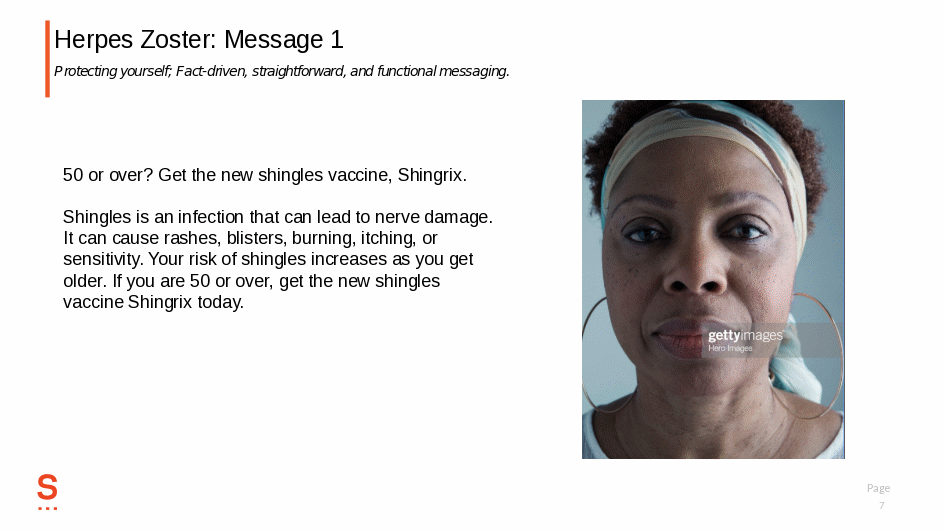
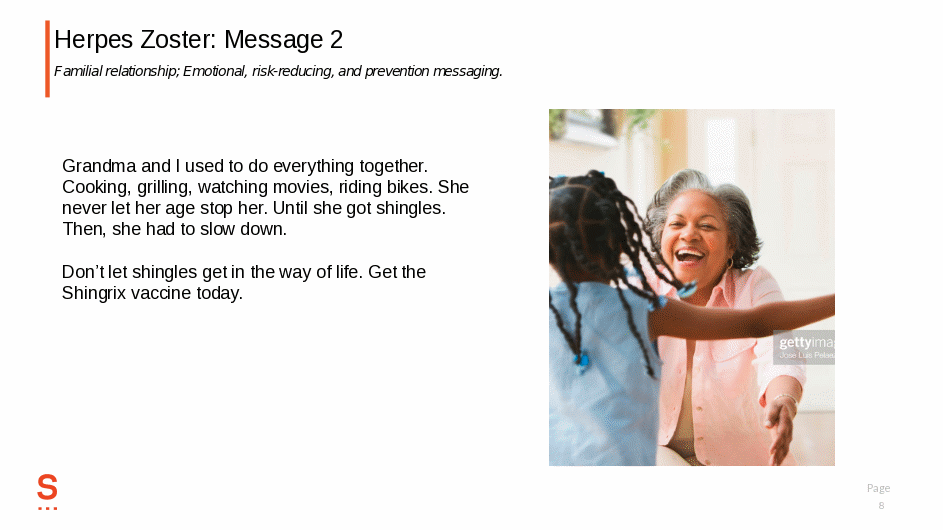
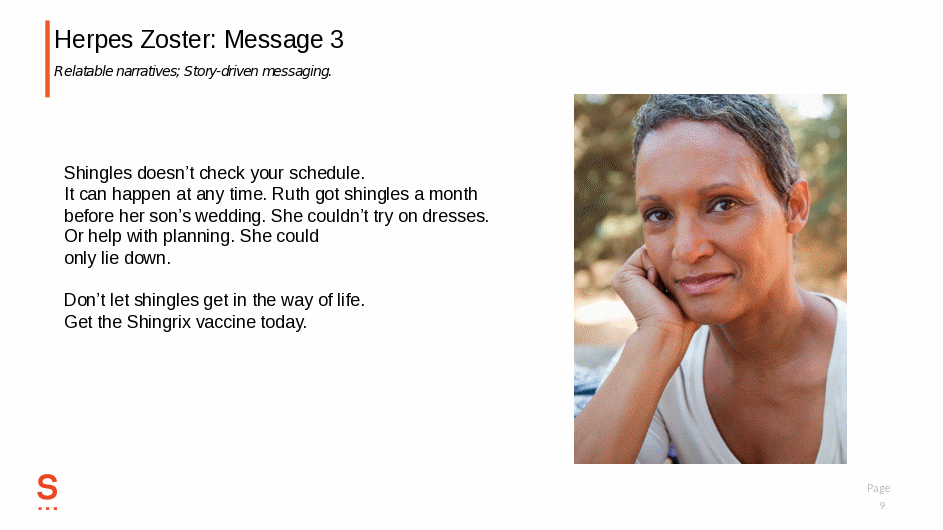
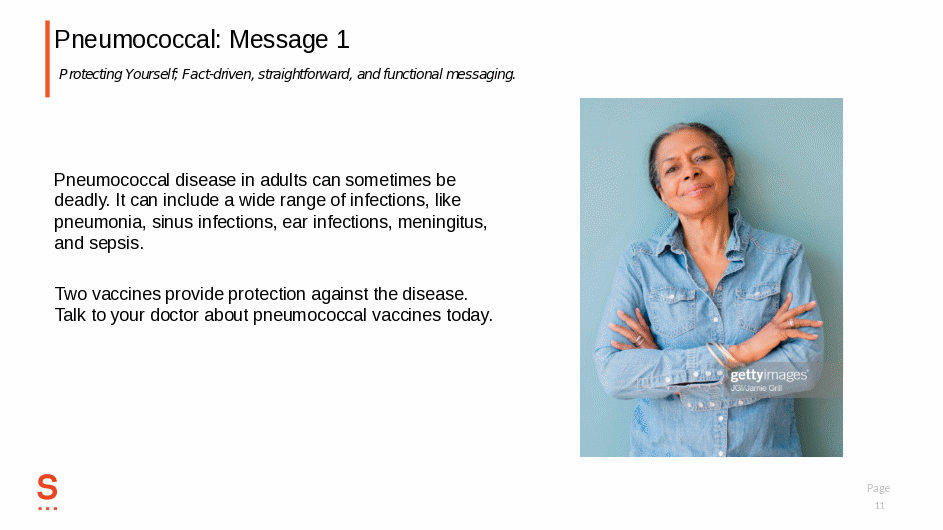

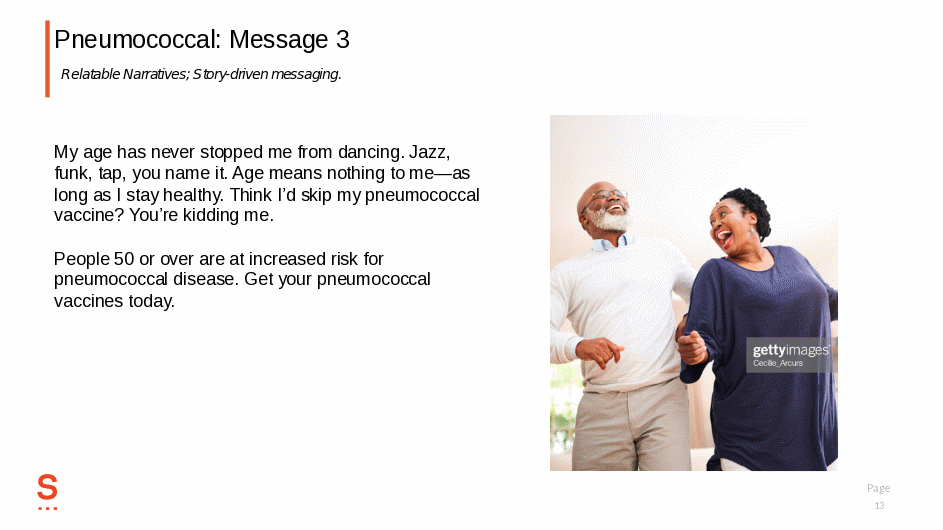
| File Type | application/vnd.openxmlformats-officedocument.wordprocessingml.document |
| Author | Ollie Gerland |
| File Modified | 0000-00-00 |
| File Created | 2021-01-14 |
© 2026 OMB.report | Privacy Policy